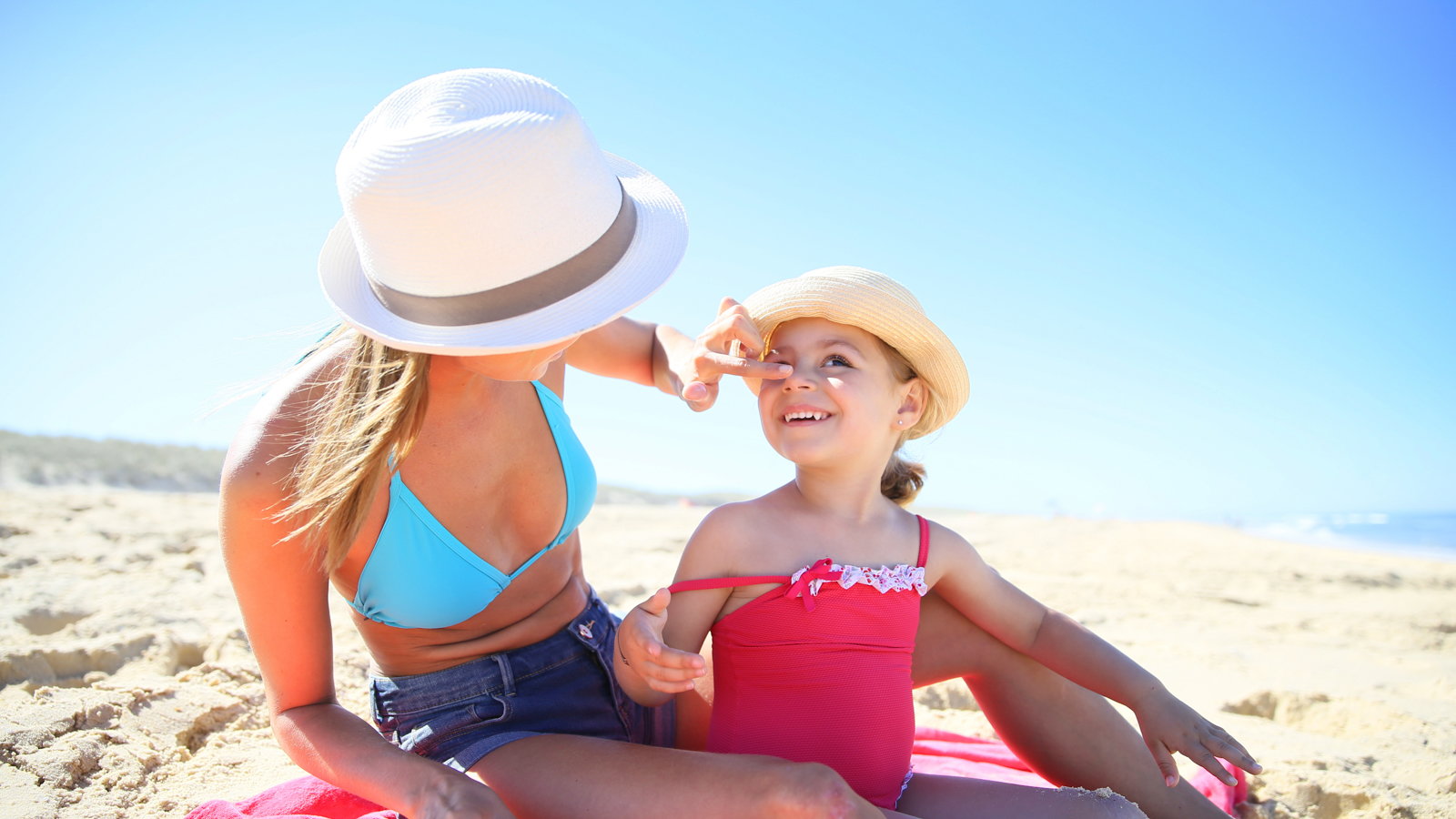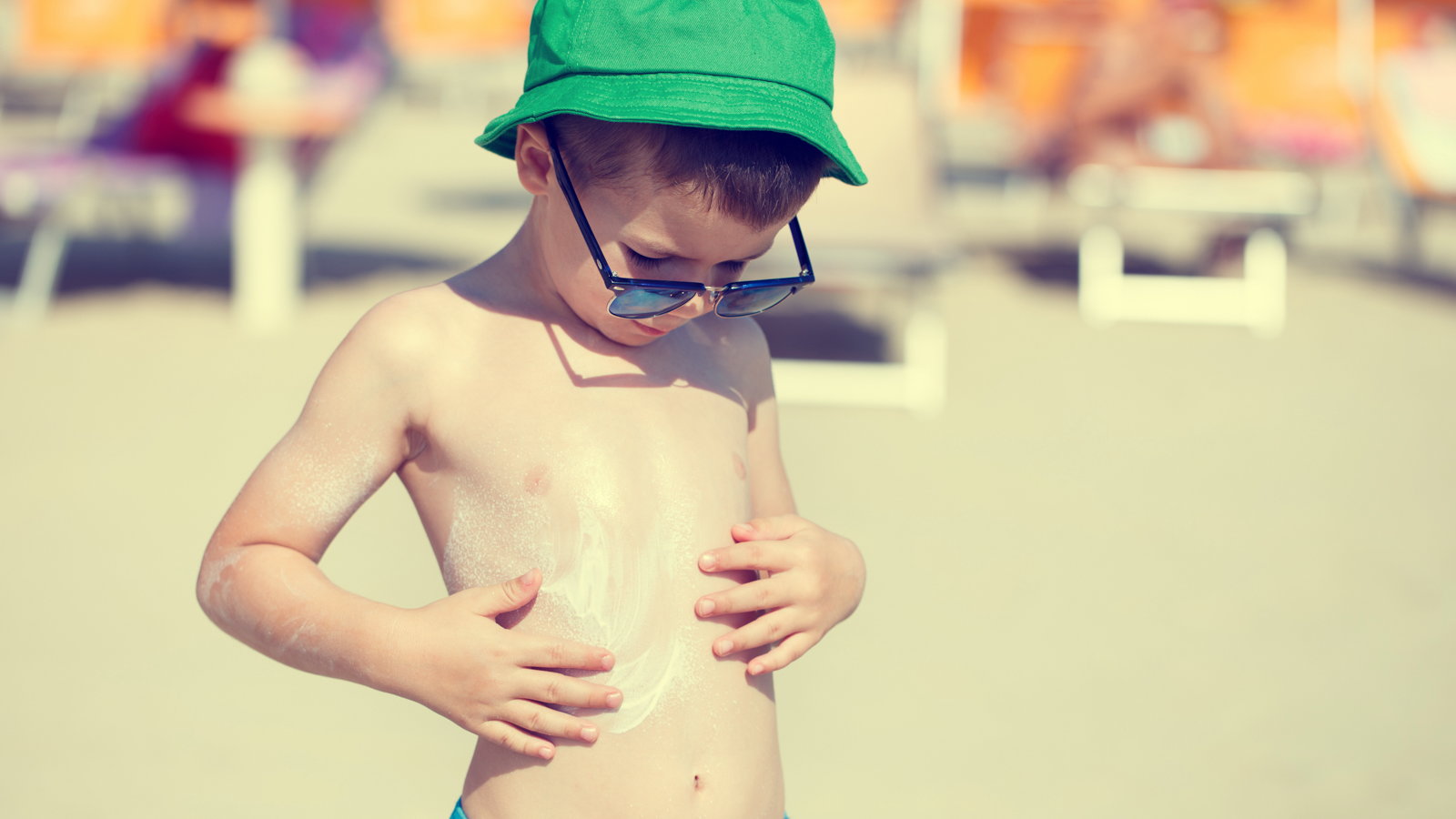
With summertime upon us, we quickly forget just how dangerous the warm sun is to our health and our families.
Everyone is at risk for sunburn. Sunburn is exactly what it sounds like: literally a burn from the sun. The rays from the sun give off strong radiation. Overexposure to the sun’s radiation causes the skin to become red and irritated. Because it can take several hours for the skin to show signs of a burn, many people spend way too much time in direct sunlight.
Preventing Sunburn
The best treatment for sunburn is to prevent one. Even on days when the weather is overcast, you are still at risk for sunburn. Sunscreen with at least an SPF of 15 (the higher the SPF, the better) should be applied at least thirty minutes before initial sun exposure and then reapplied throughout the day. Many people apply sunscreen when they arrive at the beach or are already being exposed and then never reapply. This practice offers little to no protection at all. It’s also important to keep in mind that if heavy sweating and swimming are anticipated, a water proof sunscreen should be used.
Although everyone is at risk for sunburns, infants, children, and those with light eyes and fair skin are at greatest risk. It’s not exactly protection, but those with darker skin pigment (melanin) can tolerate longer exposure to the sun before burns occur than their fairer skinned counterparts.
While a small amount of sun exposure has been documented as beneficial (helps with vitamin D production in the body, improves moods, and treats some disorders and acne) there is no magic formula for exposure. This is why all sun exposure should be treated with care.

Children and Sunblock
Infants under the age of six months should have very little to no sun exposure at all. Their sensitive skin cannot handle sun exposure and sunburn to their fragile skin can cause great complications.
For older babies, children, and adults, sun exposure should be limited.
Sunscreen should always be applied, hats worn, and if possible, lightweight long sleeved shirts. If extended sun exposure cannot be avoided, planning should be made to ensure some sort of shade will be available.
When you’ve received sunburn, what actually has happened is you’ve damaged your skin. The pain and redness are your body’s reaction to the damage. First degree sunburn is classified as pink to red. This pink to red skin might be tender and slightly swollen. When you have a first degree sunburn, the epidermis or top layer or skin is destroyed. With a second degree sunburn, there is no pink; it is red and ‘angry’. This red, angry skin will be swollen and very painful. Blisters will appear. Blistering is related to second degree burns only. If you notice severe swelling with discoloring that is white, brown or yellow and absent of pain (nerves have been destroyed) this is classified as a third degree burn. Fourth degree burns are VERY serious and require rapid medical attention. This degree is deep tissue destruction and can take months to heal.
As parents, it is our job to protect our children. Most children are not concerned with over exposure or applying sunscreen. Many studies indicate that skin cancer is linked to repeated overexposure to the sun, starting back in childhood. So in essence, your children, who will become adults themselves in the future, depend on you to keep their long term skin healthy.
If you or your child does develop a sunburn, depending on their age, there are a few things you can do to help.

Caring for Sunburns
Make sure to increase fluid intake. Water is best, next to sports drinks. Stay away from soda or salty foods, as these increase the dehydration risk.
Apply aloe Vera lotion. Keep in mind, the more severe the sunburn, the less you can put on the skin. If the burn is extremely painful, applying aloe lotion may make the burn hurt worse.
Take an OTC pain reliever such as Motrin. Get plenty of rest and most important, stay out of the sun. Sunburns take several days, even weeks to heal. The sunburned skin is damaged skin. Do not add insult to injury by making the burn worse. If the sunburn covers a large portion of the body, pain becomes uncontrollable or if the burn appears to be infected, seek out medical attention immediately.
A few simple steps of prevention before sun exposure ensures many happy and pain-free fun summer days.
